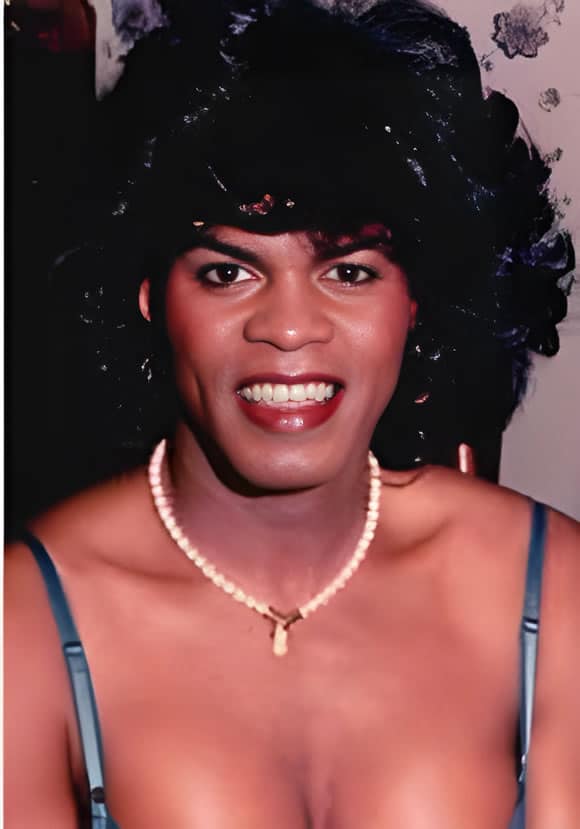The Myth of Autogynephilia

Abstract
Introduction
Cultural Diversity
Gender Dysphoria
Conclusion
ABSTRACT
The purpose of this paper is twofold:
1. To address the absence of cultural diversity in Western psychology; and
2. To address the cultural biases adversely affecting any interpretation of so-called gender dysphoria within the transgendered and transsexual communities.
INTRODUCTION
Each of us is at risk at losing our intrinsic value as human beings when anyone attempts to define who we are on the basis of his or her own prejudices or biased information. Shoddy research has consequences. Casual use of terms like gender identity disorder, gender dysphoria, and autogynephilia can create negative conditions and images for entire communities. Unless these communities speak out against such stereotypes and disinformation, the ruling culture will continue to be transphobic as the term applies to cross dressers, and as it applies to gender-defined or transsexual men and women.
CULTURAL DIVERSITY
Anne Lawrence, M.D., a post-operative anesthesiologist, frequently cites Ray Blanchard’s writings on autogynephilia. Ms. Lawrence even credits Blanchard with inventing the term autogynephilia that he defines as “the propensity to be sexually aroused by the thought or image of oneself as a woman.”
Ray Blanchard, a clinical psychologist at the Clarke Institute of Psychiatry in Toronto, hypothesizes that there are two fundamentally different types of gender dysphoric males: those who are exclusively or almost exclusively aroused by men (androphilic), and those who are aroused by the idea of being women (autogynephilic).
Failure to distinguish between sex and gender
In attempting to create a correlation between androphilic and autogynephilic behavior, Blanchard fails to distinguish between sex and gender. Such oversight is excusable among the lay public. However, it is inexcusable for any scientist or researcher. Androphilic behavior has to do with sexual preference. Autogynephilic behavior has to do with gender preference. How can anyone present a study on gender and fail to understand the difference between sex and gender?
Ironically, Anne Lawrence fails to see this as a problem. In fact, Lawrence physician embraces the idea and later elaborates on it in subsequent articles.
Absence of cultural diversity
This disturbs me. However, what disturbs me even more is the total absence of cultural diversity in any of the research by Blanchard, and any of the writings by Lawrence. They both seem to live in a world where everyone is subject to Anglo Saxon norms. No other cultures exist. Furthermore, neither the doctor, nor the researcher seem capable of acknowledging that what might be gender dysphoric in one culture might be totally acceptable in another.
This is not solely symptomatic to studies on autogynephilia. It is symptomatic of psychology.
A recent study demonstrated that physicians, when examining African American men with the same heart condition as Caucasian men, significantly prescribed less aggressive treatment for African American men. The study confirmed a belief held within minority communities for decades.
Sample size
Let us assume that the transsexual community in the United States consists of one-tenth of one percent of the population. This would suggest that there are 270,000 individuals in the country who would either want to change their sex, or want to live as a member of the opposite sex. It is obviously a small percentage of the population. Still, Blanchard’s study only examines 200 alleged transsexuals. This amounts to only 7.407e-4 of the total population. It is far too small a sample from which to draw any meaningful conclusions as to human behavior, even if the study were to be limited to one culture and one ethnicity.
It is impossible to respect any research that draws global conclusion as to the human condition but only examines one portion of it. Both Blanchard and Lawrence also fail to acknowledge cultural biases that exist both within the sampled population and the researchers themselves.
Thus far, none of the studies pertaining to autogynephilia or androphilia have even made as much as a modest attempt to be cross-cultural. Each assumes that European culture and values are applicable to all cultures.
GENDER DYSPHORIA
What is dysphoria? What does it mean?
The dictionary defines dysphoria as “an abnormal feeling of anxiety.” Gender dysphoria is as one might imagine a feeling of anxiety about one’s gender.
Gender Identity Disorder in the DSM – IV
The Diagnostic and Statistical Manual – 4th Edition (DSM – IV) pertaining to transgendered behavior, as published by the American Psychiatric Association, speaks mostly of gender identity disorder. Gender dysphoria is defined as a person with a persistent discomfort with gender role or identity. The definition also suggests that such individuals have difficulty or find it impossible to function normally in society. I am certain that this would be quite a revelation to the tens of thousands transgendered or transsexual men and women who have been functioning in society all their lives.
As far as gender, the DSM-IV is filled with contradictions, prejudicial statements and comments that are simply absurd. For example, according to the DSM-IV definition for gender identity disorder, the average heterosexual man who walks into a room filled with women, and feels a degree of discomfort with being the only man in the room, may be said to momentarily suffer a gender identity disorder. This is nonsense. And,without a means to measure discomfort, the phrase serves little if any clinical purpose.
Every transsexual, whether male-to-female or female-to-male, is said to be gender dysphoric. Yet, as even Lawrence suggests in some articles, transsexuals raise families and parent children. In fact, the overwhelming majority of transsexuals function and succeed socially, in spite of their often secret desire to be a member of the opposite sex.
What is dysphoria?
With this in mind, one must again ask, “What is dysphoria? What does it mean?”
Blanchard and Lawrence use the phrase gender dysphoria almost indiscriminately. They use the phrase as though it defines something specific and measurable, but it does not. They use the phrase without regard for the cultural values that might affect the degree to which and individual adversely suffers a gender identity disorder, if he or she can be said to suffer at all.
CONCLUSION
In what appears to be a rush for some physicians to validate themselves as psychologists, and for some psychologists to validate themselves as scientists, some otherwise intelligent people seem to have forgotten the complexity of the human spirit. The validity of their so-called discoveries must be questioned, as well as their methods.
What clever word or phrase do we use to describe the man who strongly desires to be a woman but resolves himself to cross dressing for the sake of his spouse and possibly his children? Isn’t all the hype about autogynephilia little more than the varying degrees of euphoria any of us can have when we imagine a better life?
Gender delusional rather than gender dysphoric
Can anyone of us imagine that an individual would undergo sex reassignment surgery (SRS) simply because he or she has had a sexual fantasy of what it might be like to live as the opposite gender? I would think we would call such an individual gender delusional rather than gender dysphoric.
As for my own prejudices, I must confess to my not having been very much impressed with Dr. Lawrence’s methods of presenting transsexuals to the world. It is certainly the doctor’s right to employ any method acceptable to the doctor’s conscience. In most instances, it’s a matter of taste. And I can suffice it to say that we have different tastes as far as our presentation of topics concerning gender. Still, of all the doctor’s allegedly academic or scientific exploits, this preoccupation with autogynephilia has impressed me least of all.
We people who must live beyond the typical assumptions that “boys have a penis” and “girls have a vagina” deserve considerably more respect than afforded to us through either Lawrence or Blanchard.
The End
More by Roberta Angela Dee
The Transgender Guide Site Links:
- Trans Clothing & Accessories
- Transgender Support Groups
- Transgender Voice Training
- Trans Friends & Support Chat (non-adult)
- Trans Adult & Dating Chat (adult-oriented)
- Transgender Friends and Dating Profiles
- Transgender Social Media at TGGuide
Roberta Angela Dee, Journalist & Trans Activist

Roberta Angela Dee (October 31, 1950–March 13, 2003) was an American author, transgender rights activist and frequent contributor to TGGuide.com. Roberta was born in Brooklyn, New York, grew up in Long Island, and lived in Atlanta before settling in Augusta, Georgia. She had a journalism degree. Her writing was published widely, and she was founder of the Women on the Net (WON) website, an early online resource for women of color.
